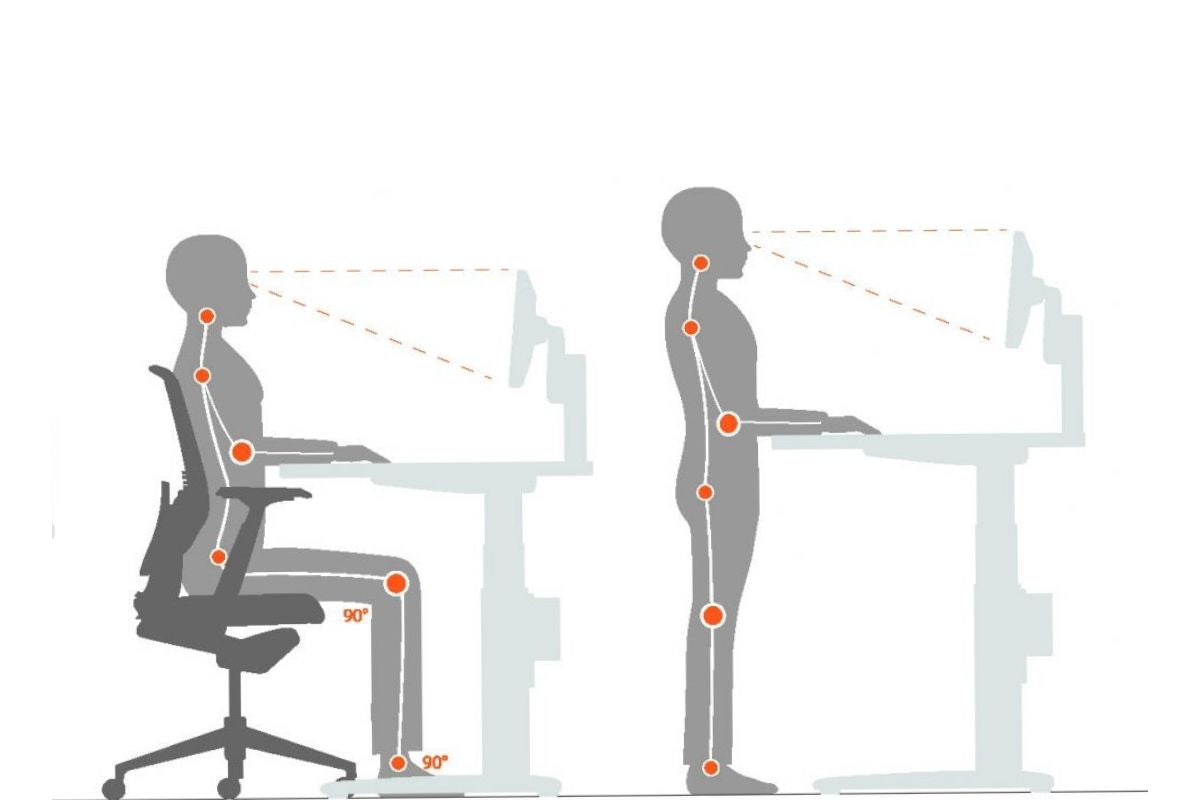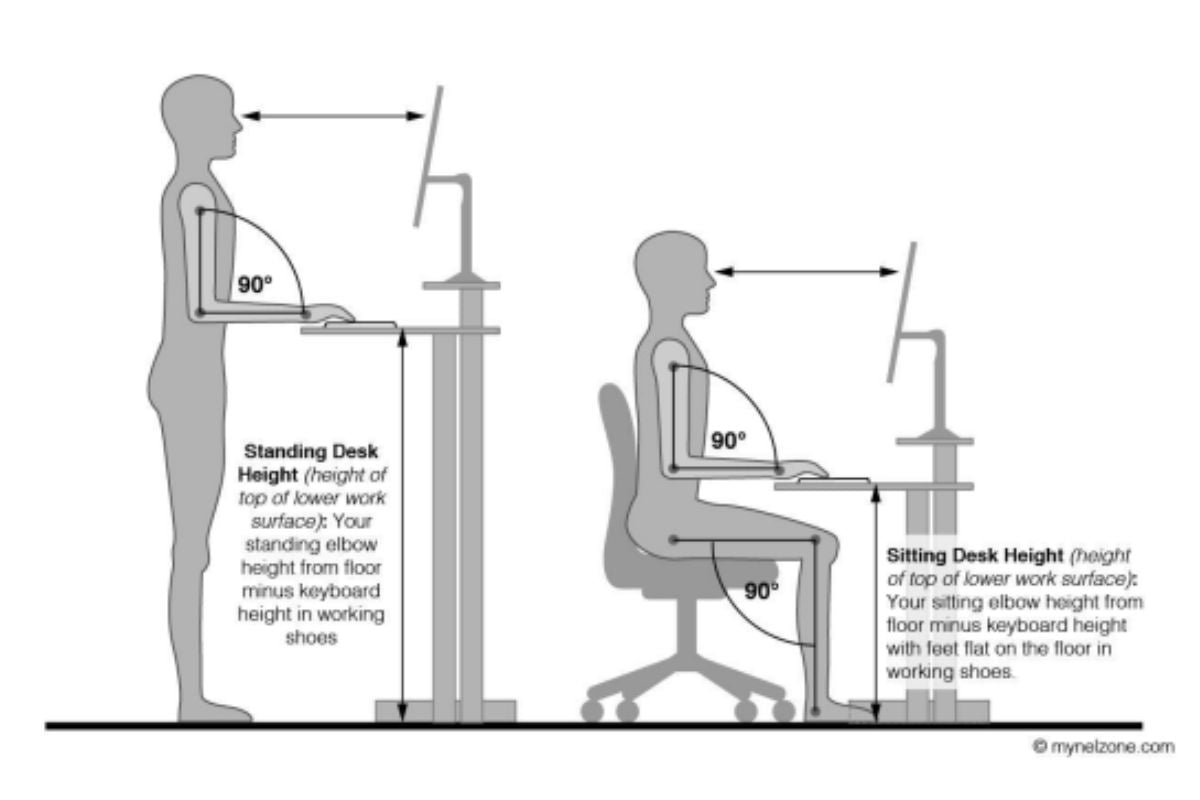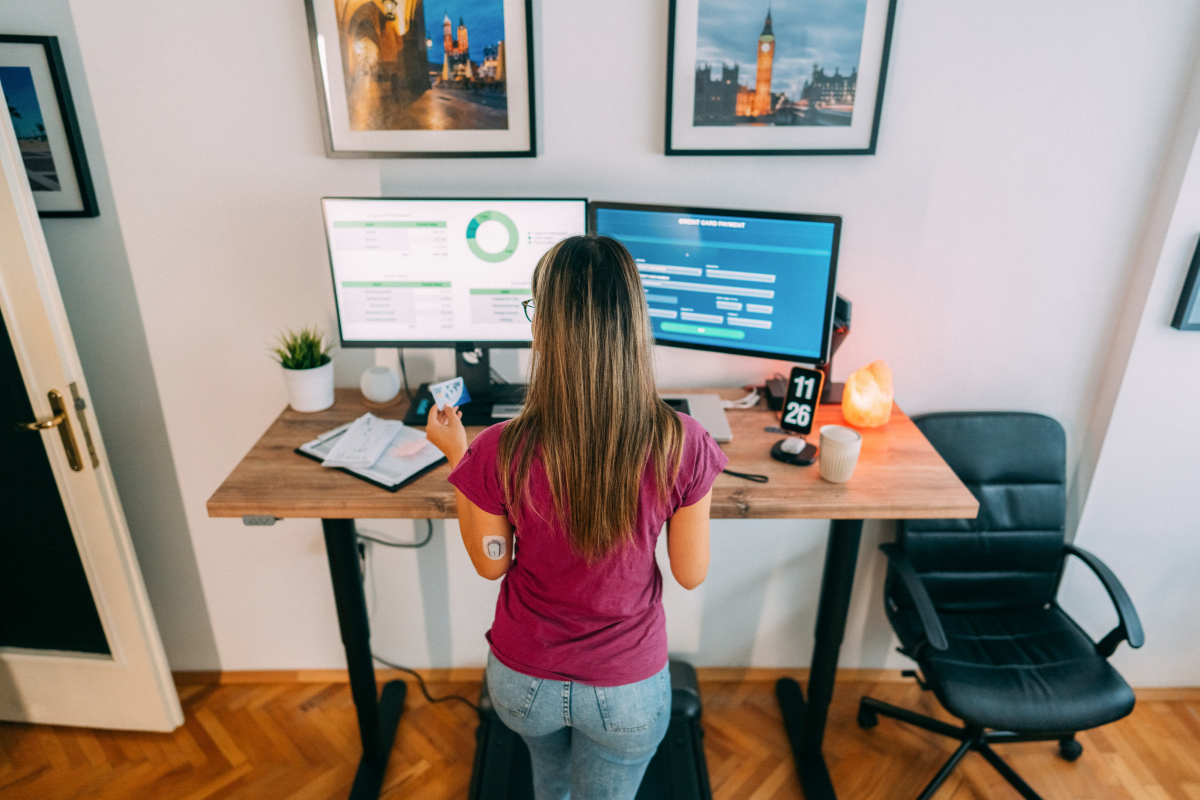We spend a significant amount of time sitting at a desk, whether it's for work, studying, or our hobbies. The bad news is that prolonged periods of sitting down can have a detrimental effect on our health if it’s not done right. For example, poor posture can lead to damage to our spinal structures and hip, back and neck pain, and a sedentary lifestyle can lead to muscle loss and weight gain, and increase your chances of deep vein thrombosis, heart disease, diabetes, anxiety and depression.
To combat these problems and ensure you’re more comfortable and productive at work, it’s essential that you sit properly at your desk.
In this article, we will explain the essential components of an ergonomic desk setup, how you should be sitting at your desk, and our top tips on how to make sure you maintain this healthy habit.
Set Up Your Desk Properly
The first, and perhaps most important step towards sitting properly at your desk, is the desk setup itself. You should consider:
1. Desk Height
Your desk should be at a height that allows your elbows to rest at your sides while typing, with your forearms parallel to the ground. If your elbows are not at a 90-degree angle, move your desk or chair up or down to correct this. Under the desk, make sure there's enough room for your legs and feet.
2. Chair
You should have an adjustable, ergonomic chair, with good lumbar support. Ensure that your feet can rest flat on the ground, and use a footrest if needed. Your knees should be level with your hips.
3. Monitor
Position your monitor(s) at eye level, so that you don't need to strain your neck looking up or down at your screen. You should look at buying a laptop stand or monitor arms (available in dual or single arm variations) if this is not possible when your desk and chair are in the correct position.
The monitor should also be at arm's length away from your face, no closer to you than 20 inches (about 50 centimetres) and no further away than 40 inches (about 100 centimetres).
 You should keep the depth of your desk in mind for this reason; does your desk have enough space so that you can comfortably work with your equipment in the right position?
You should keep the depth of your desk in mind for this reason; does your desk have enough space so that you can comfortably work with your equipment in the right position?
4. Keyboard & Mouse
Place your keyboard close enough that your wrists and forearms are in line, and your wrists remain straight when you type. You should also avoid resting your wrists on the desk as this can cause strain to your wrist from holding it at an unnatural angle.
Use a mouse pad with wrist support and position it close to the keyboard. If possible, set the sensitivity of the mouse so you can use a light touch on it. Avoid quick repetitive movements where possible.
All of these factors will encourage you to sit better at your desk, but also help to optimise your desk for maximum productivity and comfort.
How to Sit Properly at Your Desk
Once you have an ergonomic workstation, here’s how you should be sitting at your desk:
- Sit upright, and use your chair's lumbar support to maintain the natural curve of your lower back. Your knees should be at or just below hip level.
- Keep your hips as close to the back of the chair as possible, and avoid slouching or leaning to one side.
- Avoid crossing your legs for long periods of time.
- Relax your shoulders, and avoid keeping them high or hunched up.
- Keep your elbows close to your body and your forearms parallel to the ground, resting them on a support.
- Keep your feet flat on the floor or on a footrest.

Tips to Maintain Proper Posture
As well as sitting in the proper position, there are some other things that you should do to support your health when sitting for prolonged periods of time.
1. Regularly Check Posture
Check your posture throughout the day, and make adjustments as needed to maintain proper alignment. You should also check that your head is not protruding forward, even when you are otherwise in the "right" position.
If your chair doesn’t provide proper spinal support, use a pillow (or jacket!) to support your lower back.
2. Take Frequent Breaks
Avoid sitting for prolonged periods. Set a timer to remind yourself to stand up, stretch, and walk every 30 minutes or so. Simple stretches, like calf raises, rolling your shoulders and rotating your neck, can help alleviate tension and improve blood flow.
Movement can also be a good boost for your mood and productivity levels; it is thought that just 10 minutes of movement is all it takes to increase mental focus, with 37% of employees reporting high levels of energy in the middle of the day when incorporating small and frequent movements.
3. Use Proper Typing Techniques
Try to type with a light touch to reduce strain on your wrists and fingers, rather than banging on the keys.
Moving about more regularly also helps reduce the risk of a repetitive strain injury which affects 3 out of 5 office workers in the UK.
4. Invest in a Standing Desk
A standing desk can encourage you to switch between sitting and standing positions, which can help to improve posture and alleviate back pain. Many people also report feeling better when working at a standing desk, with one study showing that participants who used a sit–stand desk had reduced neck and shoulder pain, and a significant increase in subjective, vitality in work-related engagement and self-rated work performance over a four-week period.

Looking for a standing desk for your home, office or workspace? Check out our collection of standing desks, available for next working day delivery if ordered by 3pm. Our desks come with a 7 year warranty, 30 day risk free return, as well as access to a UK-based customer service team to answer any questions that you might have.
Otherwise, our standing desk blog provides more useful tips on using a standing desk for a more balanced lifestyle. Feel free to contact us with any questions, with the handy live chat feature on our site, or via email at info@ergodesks.co.uk.
Published: 20/09/2024
Updated: 28/03/2024

